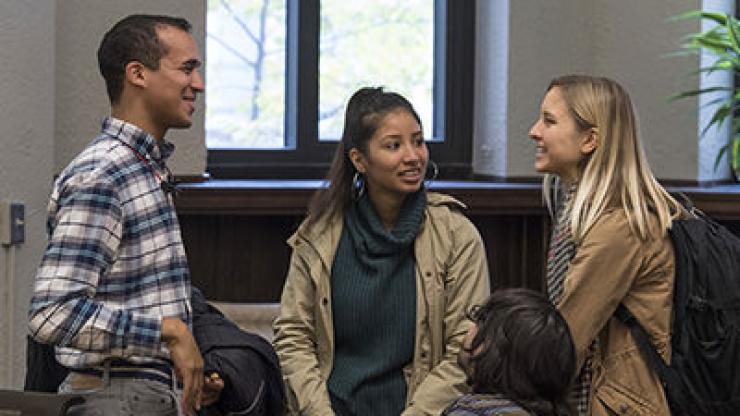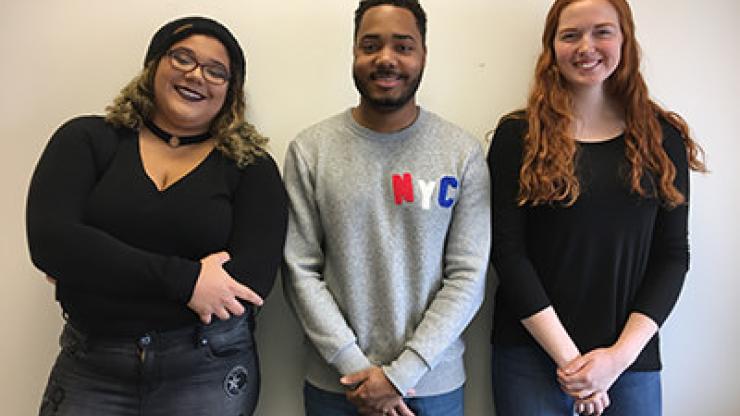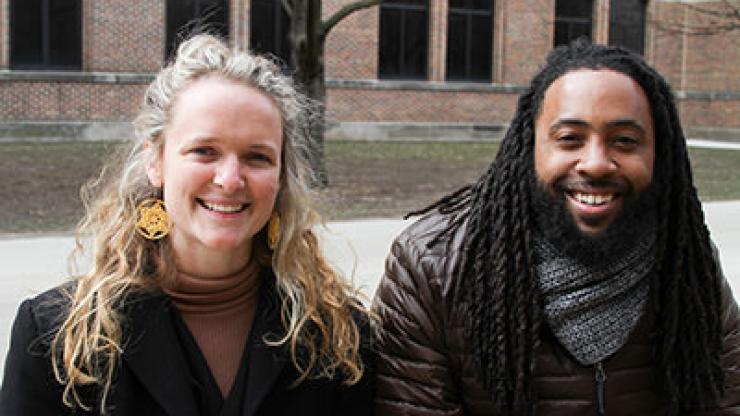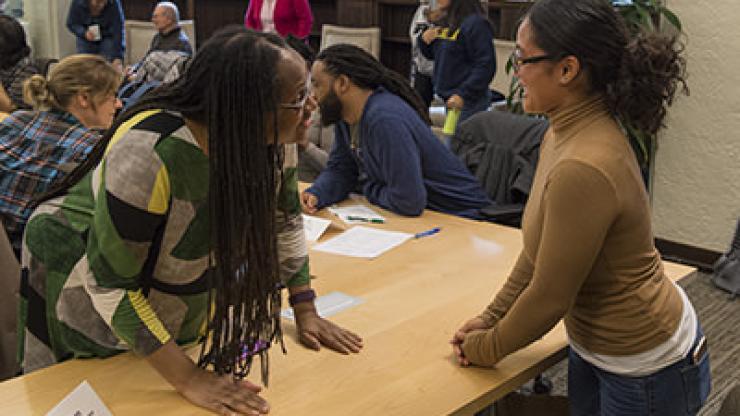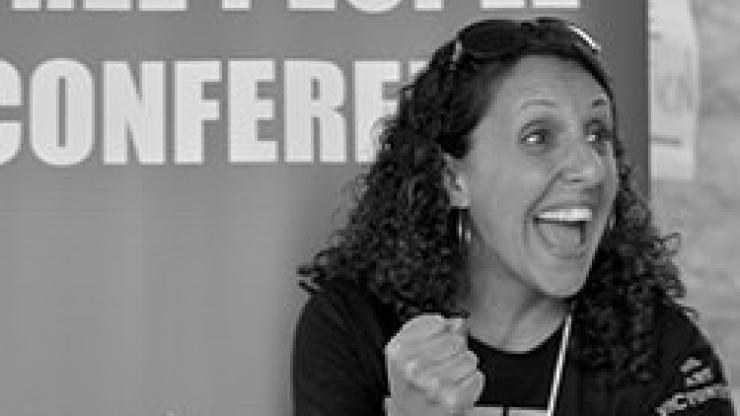dije
Studying and Advocating for Early Childhood Education Access: Faculty Spotlight on Dr. Christina Weiland
We are delighted to highlight the dije-related scholarship and advocacy of Dr. Christina Weiland, an Assistant Professor of Educational Studies who is also affiliated with the Combined Program in Psychology and Education, and the Education Policy Initiative at U-M’s Ford School of Public Policy.
Dr. Weiland studies the effects of early childhood interventions and public policies on child development, particularly for children from low-income families. Last spring, Dr. Weiland published her co-authored book, “Cradle to Kindergarten: A New Plan to Combat Inequality,” to wide acclaim. The book speaks candidly about disparities in the “school readiness” of American kindergartners. This readiness include a child’s ability to demonstrate the foundational knowledge, skills, and behaviors required for curriculum-based kindergarten standards. The book explores the types of educational opportunities made available to low-income students between the ages of zero and five-years-old. Dr. Weiland and her co-author Dr. Ajay Chaudry review research on what works best for increasing school readiness skills, and the types of environments that foster children’s development of such skills. The book concludes with recommendations for policymakers interested in research-based investments in zero-to-five education.
SOE Educational Justice Intern Dexter Moore, Jr. interviewed Dr. Weiland in December 2017.
Can you share the inspiration behind your research on early childcare education? How does your work connect to the SOE’s dije mission?
CW: My interest in early childhood education grew out of my first job at ABT Associates, a policy research firm in Cambridge, Massachusetts. At the time, they had a lot of early childhood work and I was assigned a project that sent me all over the country to collect data on preschool classrooms. I was sent to really rural places; I am from rural Appalachia, a first generation college graduate, so I was really interested in issues of equity. It was really eye-opening for me, as a twenty-two year old, to see these little guys and girls in programs all over the country where they wouldn't be in preschool otherwise, and to see how much they loved it. These were for students in a program called Even Start, for kids whose family incomes are even lower than those required for Head Start. For me, that was really inspiring because it was a lot like the community I grew up in.
From there, I educated myself about the research on early education. I became a middle school teacher to figure out how close to the ground I wanted to be. I taught at Ted Sizer’s founding charter school and was in an integrated classroom where I taught Humanities. From that experience, I got a pretty strong message that I wanted to be with research, so here I am.
Related to dije, we know that kids come into kindergarten on the first day looking very different based on their family income, and we as a society have chosen not to do much in that period to support young families. They can’t take out loans to fund this period of life like they can for college, though that itself has its own set of issues. So we’ve really left these families on their own, and that's a choice we’ve made. I see this as a time when developmentally, children are more flexible than they ever will be in their lifetime, and so we really are missing an opportunity to start them on a positive trajectory.
Can you frame the “problem” you explore, for those of us who have not read the book?
CW: We talk about the disparities that exist in terms of how kids land in kindergarten on the first day of school in their “school readiness skills,” and the types of opportunities they’ve had up to that point that led to where they are. [After] reviewing the research, we put forth a plan for what we as a society should do if we were going to make research-based investments in children aged zero-to-five. It is a multi-part plan. It includes a proposal for paid family leave for the mother and the father. It includes a childcare subsidy proposal because we know that families often cannot find or afford high-quality childcare, and the subsidy would be offered on a sliding scale based on income. What it would do is allow families to put their children in the type of care setting they would like, because choice is still prime in our plan, so hopefully the supply of quality slots would go up and families’ ability to get into those slots would also increase.
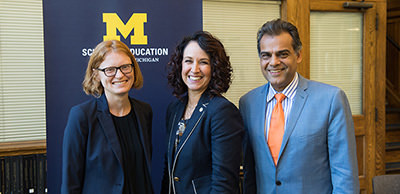
We have very scarce zero-to-three care that is high quality, and the majority of kids are in some type of care arrangement that is non-parental when they’re infants. That is sort of the normal thing that happens to kids in our country now. At the preschool level, we argue that universal preschool should really start at the age of 3, and we should use the science where we have it the most in the early childhood period because we know the kinds of experiences that kids should be having, and we know that most kids do not have access to (those experiences). Particular examples include curricula that are proven to work and ways of supporting teachers that are proven to work. But most preschool programs that exist do not make use of what we know, so our proposal emphasizes research-based proven metrics.
You recently traveled to Seattle to stand alongside Senator Patty Murray. Can you share the purpose of your visit and describe the momentum that your research is creating?
CW: Patty Murray put forth a bill this fall, the Childcare for Working Families Act, and many of the things she asked for in the bill align with our proposal. So she went to Seattle and Tacoma to share this proposal and we met her in these two cities to meet with stakeholders and local organizations who work hard on these issues nationally. We accompanied her to back her proposal up with the research. We have also been working with a number of states who are interested in improving early childcare opportunities for children in their area. We meet with key stakeholders to understand their next steps and to identify the parts of our plan that most resonate with their constituent group.
How does the U.S. compare to international models of success?
CW: What we know about the international scene is that when you look at how many kids in our key competitor nations are going to preschool, in about a dozen countries it’s over 90%. So, in many ways we are trailing behind the OEC (Observatory of Economic Complexity) countries. We also spend very little compared to other countries. So, in our book we do not pick one model and say “this is what we should do,” because there are too many cultural differences to consider. We focus on what other countries are spending and on what, and what are we doing? We see enormous gaps in all of the areas that we target.
I read The Sandbox Investment many years ago, and it was instrumental in framing my understanding of the existing inequities within early childcare education. Do you have other literature/scholarship that you would suggest for community members to learn more about this important topic?
CW: Something that we should focus on as we think about the disparities is: What do exemplary preschool programs look like? Someone who has written extensively about this is Vivian Gussin Paley. One of her books, The Boy Who Would Be a Helicopter, captures the magic of a really great early childhood classroom. For most people, we haven’t been that age or been inside of a preschool classroom for a very long time, so her work gives you the perspective of a kid in a classroom and shows you what’s possible around development. This particular book is about a boy with a disability and how he grows across the year and the classroom structures that support his development. Because our community has so many “practice strong” people, teacher narratives might be useful for complimenting the policy and providing the kinds of perspective like The Sandbox Investment does.
What are some ways that community members can support these recommendations?
CW: Our policies are aimed at the federal level so it’s a bit difficult to give marching orders to our community members, but there are states and localities that have taken these problems on in a big way. San Antonio and Seattle are places where localities have decided to fund preschool. In Seattle, this was a ballot measure, and so if something like this were to happen then of course you could have community members be active around these issues. More locally, this is an issue in Washtenaw County that is getting more attention because we do have public preschool in Michigan. It is very income targeted and it only goes to about a third of the kids, and there is a waitlist—meaning there is more demand than there is supply. To the degree that there is any movement on those fronts with the gubernatorial election coming up, there could be an opportunity for community members to contribute politically.
In all, the interview with Christina Weiland revealed her deep interest in the active ingredients that drive children’s gains in successful, at-scale public preschool programs. To date, her work has been characterized by her research and partnerships aimed at improving the life chances of young disadvantaged children, and the SOE is fortunate to have her as part of our intellectual community. You can learn more about Christina's professional experience on her SOE Faculty profile.
MORE FROM Expansions Vol 2
The Marsal Family School of Education is proud to be a leader in the campus-wide initiative promoting Diversity, Inclusion, and Equity. Adding "Justice" to these values underscores the role of educators in the creation of just societies. Through research, public scholarship, community building, and the preparation of education practitioners and policymakers, we articulate and advance our dije agenda.
